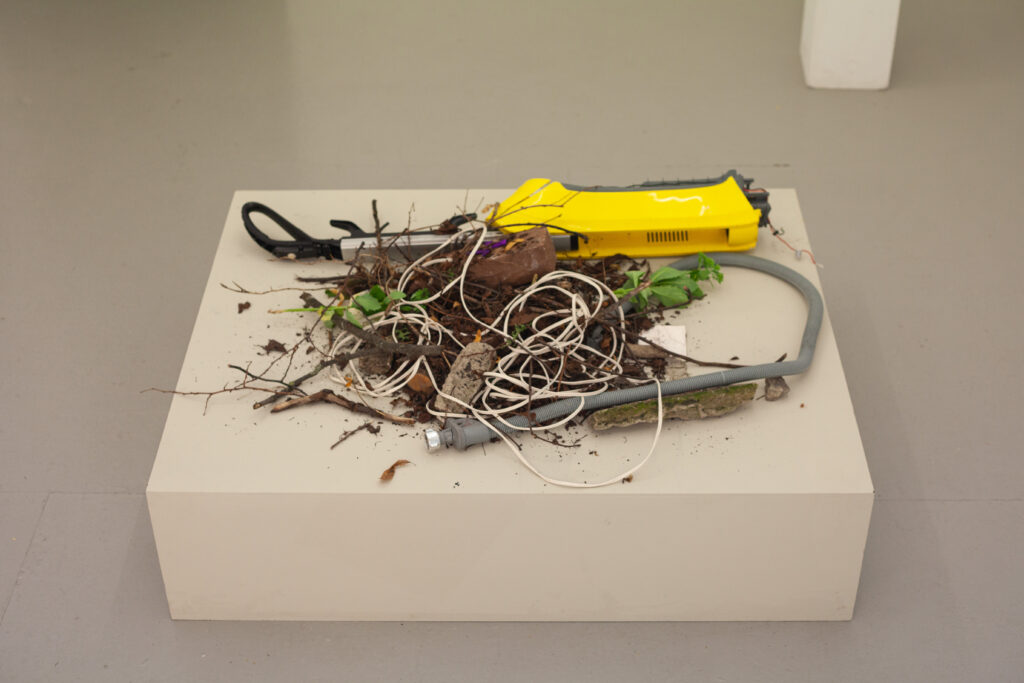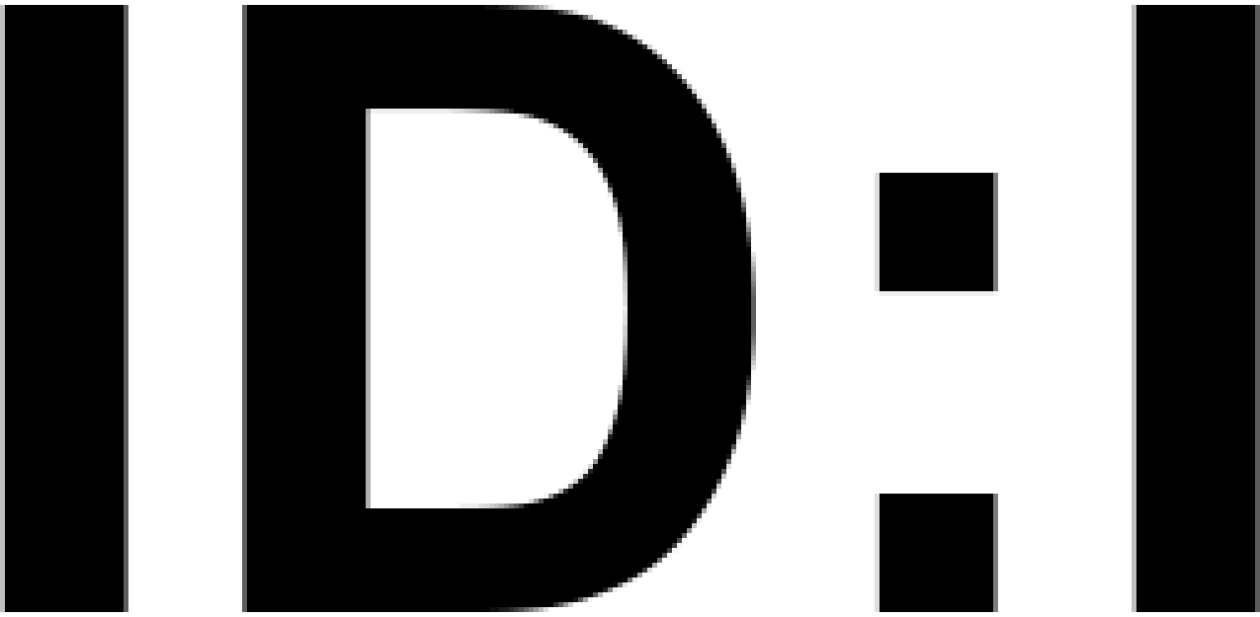
María Kolodynski, SOMETHING SHINES BENEATH THE EARTH
ID:I Galleri, Stockholm, July—August 2023
- One Saturday in July we walked up on Frösundatoppen. The crowns of leaves surrounded us, and on the top of the hill the grass was noticeably dry. Thinking that the rubble of my father’s former apartment in Klarakvarteren was inside this pile maybe made it feel a bit familiar sitting there, even if I had never been in that apartment at Norra Smedjegatan. He said it was close to where the Gallerian mall is now. And close to Brunkebergstorg. Someone said that the old Hagalund is also in this pile. My paternal grandmother lived in the old Hagalund, so it’s even possible that the house where she grew up, which her father had built, is also inside the pile. When we sat down on the hill after climbing it, María said that in Argentina there is a tradition to bury things as a way to show gratitude. When she told us this, it was the first time I thought of the hill as anything but a curious landfill. Perhaps it was a gesture of gratitude to bury the blocks of Klarakvarteren here in the garden city of Hagalund. It is still a very intense thing to consider: that part of this beautiful city is now inside a mountain. Even what I see outside the mountain is cast in another light. The buildings which still stand around me—they are not yet buried. They are places where life is still happening. To walk on the hill of Frösundatoppen connects these two horizons. In a Lacanian perspective, I can’t help to think of constructivism. Burial, concealment, and erasure are also acts of creation.
—Anna Kinbom
- The project centers on Frösundatoppen Hill, located in the outskirts of Stockholm. This hill, which is literally built from the rubble of the former heart of the city, serves as a trigger and first working site.
- A hypothetical situation where there is a wounded link between Klarakvarteren (which is the place in the city center where those buildings were) and Frösundatoppen. The hill is quite abandoned and not many people use it, the roads are in bad condition and there is no public lighting on the roads. Regarding the center/Klarakvarteren, it’s a controversial and not so safe public space. Something got moved and it is not quite settled.
- At the opening, Anna Kinbom will perform a couple of songs. One will be ”Stockholm Bank Song,” which she wrote in 2014 at the invitation of Jens Evaldsson for a performance outside the bank offices at Brunkebergstorg and Malmskillnadsgatan, in the former Klarakvarteren. Brunkebergstorg is situated where the former Klarakvarteren used to be. The opening performance is also in dialogue with the piece ”Osjungen/Unsung” by artist Anne Marte Overaa (SE/NO) in which Overaa celebrate what is taken for granted.
- There is an amalgamation of the archival and the fictional combining documentation and artifice. The works fall along two axes between the falsity and the real.
- At the end of the exhibition, some of the postcards will be delivered to a tourist location in Stockholm where postcards are sold, so that they can circulate through organic social activity, without a specific intention or destination in mind.
- There is a certain traction in absence. The archive is a technology of memory. Memory is a collection of data. The data for this project is a pile of rubble concealed beneath a hilltop. That hilltop is an archive.
- Ett Hem [A Home], 2023
Single-channel video, 2K, stereo sound, black and white Duration 5:25 minutes
- 28 postcards from Frösundatoppen, Klarakvarteren, 2023 Charcoal, graphite and watercolor on printed paper, postcard rack
- Pseudographic archive, 2023
María Kolodynski (B&R* Patagonia) is an artist and filmmaker. She has a bachelor’s degree in Image and Sound Design from the University of Buenos Aires. María focuses her artistic practice around the link between a body and otherness—an endless conversation in permanent movement—and investigates the invisible forces of connection and the perception of the hidden. She works to find ways to continue living in contradiction through those objects and places that present themselves to her: silkworms, videos, glass, spaces, people, magnets, to name a few. By following these things, she gives them form. The political dimension is a constant underlying theme in María’s work. Currently attending the Artists Program at the Universidad Torcuato Di Tella, Art Department, Postgraduate. She lives and works in Buenos Aires. *Brought and Raised
Anna Kinbom works with songs and texts which form a basis for her work and performances. In 2022 she published a chapbook with texts and lyrics (Cuestión Editora, Buenos Aires). For six years now, Kinbom has been working on going back to her teenage years. In various works she has depicted times of change, and this has had expression in installations as well as performance and sound and video works. Kinbom’s most recent exhibitions were at Extension Art Space in Stockholm (2023), Whose Museum Malmö, Konsthall C, Konstväxlingar Skanstull (2022), Celsius Projects in Malmö and Konstepidemin in Gothenburg (2021). She has performed in exhibitions at Moderna Museet (2022, 2015), at Index (2022, 2020), for Stockholm Konst (2020) and Marabouparken (2017). She has an MFA from the Royal University of Fine Arts (2013) and has studied at the Akademie der Bildenen Künste in Vienna.
Special thanks to Anna Kinbom, Åsa Mähring, Charles Berret, Santiago Campos, Gale Cine, Cristina Lembeye, Tomo Cabrera Cañas, Luciana Malavolta, Club de Lectura, Erin Sullivan, Jonas Hatschek, Tove Sundgren, Dan Lageryd, Rut Karin Zettergren, Rosalie Yu, Spekulativa Juntan, Embassy of Argentina in Sweden, Silvia Cao, Naim Afram, Heidi Nilausen, Mayra Ferreira Basso, Sonia Ruiz.

